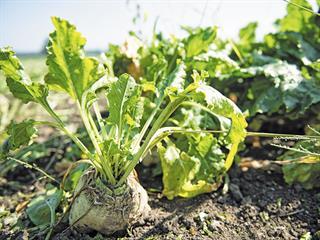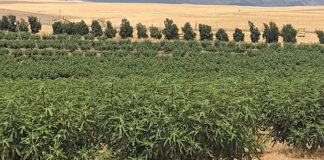
Bioethanol and biodiesel can be blended with petrol and diesel, thereby reducing dependency on fossil fuels. The sugar and starch extracted from feedstocks are converted into bioethanol, and the vegetable oil into biodiesel.
A valuable by-product is animal feed. About 1t of sugarcane can be used to produce 80l of biofuel and 280kg of bagasse; 1t of grain sorghum can be used to produce 417l of biofuel and 221kg of animal feed.
With this in mind, South Africa’s Water Research Commission (WRC) initiated a R7,4 million research project – from April 2009 to March 2015 – to determine the water use and production impact of various feedstocks suitable for biofuel production in the country.
The research was guided by government’s national Biofuels Industrial Strategy (BIS), which earmarked sugar cane and sugar beet as candidates for the production of biofuels, and sunflower, canola and soya beans for bioethanol. Maize and other feedstocks were excluded due to food security and biodiversity concerns, said the BIS in 2007.
At the time, what is now the Department of Energy (DoE) set a target of around 400 million litres of national biofuel production within five years.
Setback
“However, this target was not met because biofuel production is not financially viable at current feedstock and crude oil prices. In addition, the BIS was criticised for government’s apparent lack of consultation with the petroleum industry, especially regarding the feasibility and costs associated with the blending of biofuel,” explains Richard Kunz, a research fellow in hydrology at the University of KwaZulu-Natal (UKZN), who was part of the WRC research project.
Field trials at UKZN’s Ukulinga Research Farm and the University of Pretoria’s Hatfield Research Farm looked at the production of sugar cane, sugar beet, sweet sorghum and grain sorghum as potential feedstocks for bioethanol, and sunflower, soya bean, canola, jatropha and moringa for biodiesel production.
The project found that the area of arable land required to grow feedstock crops to produce biodiesel was greater than that needed to grow feedstock crops for an equivalent volume of bioethanol.
A total of 140ha (at 95t/ha) sugar beet, 196ha (at 64t/ha) sugar cane, or 902ha (at 2,66t/ha) grain sorghum was needed to produce one million litres of bioethanol, compared with 1 211ha (at 2t/ ha) canola, 1 979ha (at 1,27t/ha) sunflower seed or 3 179ha (at 1,7t/ha) soya beans to produce the same quantity of biodiesel.
A number of private companies have already approached the DoE with proposals to set up biofuel manufacturing plants in South Africa, according to Kunz.
Collectively, these companies would be able to produce more than 1,2 billion litres of biofuel annually – three times the conservative target of 400 million litres initially suggested by the BIS back in 2007.
To meet the feedstock production and supply demands, the companies would require a total area of arable land of 1,7 million hectares. According to a 2012 department of agriculture report, South Africa has about 2,5 million hectares of under-utilised arable land, most of which is in the former homelands.
“But it’s not the availability of arable land that threatens the potential viability of large-scale biofuel production,” cautions Kunz. “It’s the availability of water required to grow sufficient quantities of each feedstock. The BIS task team recognised this and called for the necessary research on feedstock water use. The WRC responded, and the results of our research will hopefully be used to develop an effective policy on biofuels.”
Most efficient
The project found that sugar beet and sweet sorghum achieved the highest water-use efficiency (WUE) of the biomass crops tested:
- 4 110m³/ha of water was required to produce an average yield of 45,4t/ha sugar beet – a WUE of 11,05kg of sugar beet produced per cubic metre of water.
- 4 360m³/ha of water was required to produce an average yield of 41,8t/ha sweet sorghum – a WUE of 9,59kg sweet sorghum.
By contrast, sorghum’s WUE was 1,13kg/m³ and soya bean’s WUE was 0,75kg/m³. The researchers also looked at areas of South Africa where biofuel feedstock would grow under rainfed conditions.
They found that large parts of Mpumalanga, KZN and the Eastern Cape were best suited to sugar beet planted in September, where at least 6t/ ha dry matter production was attainable. According to Kunz, a coastal section of the Eastern Cape would yield the “largest crop per drop” of 2kg to 2,5kg of dry matter production per cubic metre of water used.
However, the research also showed that sugar beet is particularly prone to fungal disease when cultivated in hot and humid areas.
Policy changes
During the course of the six-year research project, there were a number of policy changes on biofuel feedstock production in South Africa. For one, the department of water (DWS) said it did not support the use of valuable irrigation water for the production of biofuel feedstocks; this should be employed for food crops.
“It only wants to see underutilised arable lands used for growing these crops, and only under rainfed conditions,” says Kunz.
The DWS is also keen to know the water-use impact of growing biofuel crops in communal farming areas.
Kunz agrees that this is an important question, considering that the WRC research was conducted under optimal growing conditions where yield was not limited by water or nutrient availability. This is seldom true for South Africa’s communal farming enterprises, where soil water and fertility strongly influence crop yield.
Conclusions
To study developing agronomic practices for best production of biofuel crops by emerging farmers, as well as the economics of producing these feedstocks in rural areas, the WRC has funded another research project that will run until March 2020.
“From the research we’ve conducted to date, we now know that, to be sustainable, biofuel feedstock production must take place only under rainfed conditions, and these crops must be grown in rotation with food crops such as maize and wheat,” says Kunz.
“With the support of training and resources, the production of biofuel feedstocks must also be promoted in rural areas where agricultural crop production is currently non-existent or sub-optimal.
“Finally, the production of these crops must strive towards the most beneficial use of available water resources.”
- To read the ‘Assessment of biofuel feedstock production in South Africa…’ (WRC Report 1874/1/15), visit wrc.org.za. Partners in the project were UKZN, the University of Pretoria and the Council for Scientific and Industrial Research.
- Phone Richard Kunz on 033 260 6499, or email him at [email protected].













